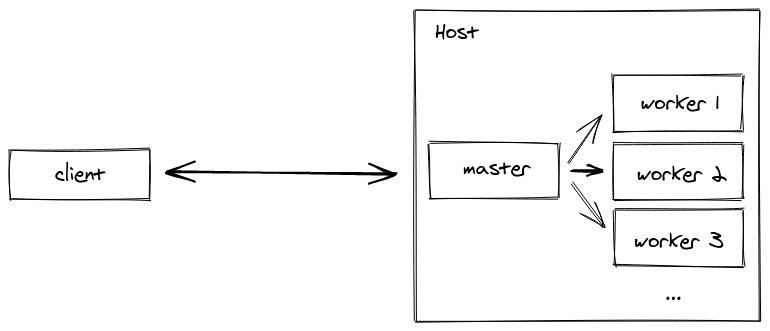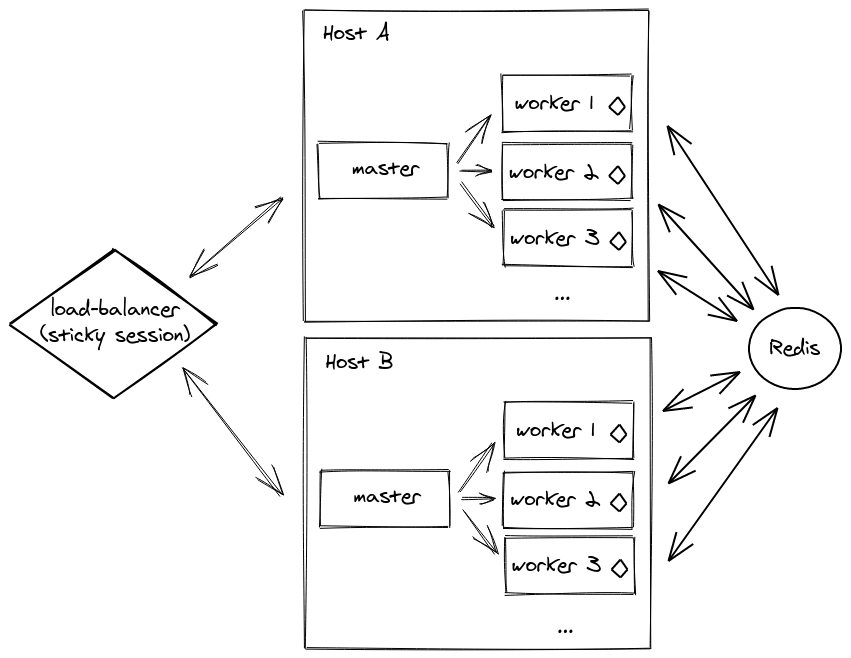Sticky sessions for Socket.IO
A simple and performant way to use Socket.IO within a cluster.
Unlike other packages like sticky-session, the routing is based on the session ID (the sid query parameter).
See also:
-
sticky-session (routing based on
connection.remoteAddress) -
socketio-sticky-session (routing based on the
x-forwarded-forheader)
Table of contents
Installation
npm install @socket.io/sticky
Usage
const cluster = require("cluster");
const http = require("http");
const { Server } = require("socket.io");
const numCPUs = require("os").cpus().length;
const { setupMaster, setupWorker } = require("@socket.io/sticky");
const { createAdapter, setupPrimary } = require("@socket.io/cluster-adapter");
if (cluster.isMaster) {
console.log(`Master ${process.pid} is running`);
const httpServer = http.createServer();
setupMaster(httpServer, {
loadBalancingMethod: "least-connection", // either "random", "round-robin" or "least-connection"
});
setupPrimary();
httpServer.listen(3000);
for (let i = 0; i < numCPUs; i++) {
cluster.fork();
}
cluster.on("exit", (worker) => {
console.log(`Worker ${worker.process.pid} died`);
cluster.fork();
});
} else {
console.log(`Worker ${process.pid} started`);
const httpServer = http.createServer();
const io = new Server(httpServer);
io.adapter(createAdapter());
setupWorker(io);
io.on("connection", (socket) => {
/* ... */
});
}How it works
The first HTTP request (without sid query parameter) is forwarded to a random worker (based on the loadBalancingMethod option).
The underlying Engine.IO server creates a new session and emits a connection event with the session ID. The worker sends this session ID to the master, which stores the relationship between the worker ID and the session ID.
For subsequent requests, the sid query parameter is extracted by the master process, which then forwards the handle to the right worker.
Notes
- this package is not needed if you only use WebSockets (which might be a sensible choice as of 2021)
// client-side
const socket = io({
transports: ["websocket"] // HTTP long-polling is disabled
});- in a multi-server setup, you will need to use another adapter, like the Redis adapter
- this module is not compatible with an HTTPS server
For more information, please see this issue.
License
MIT


